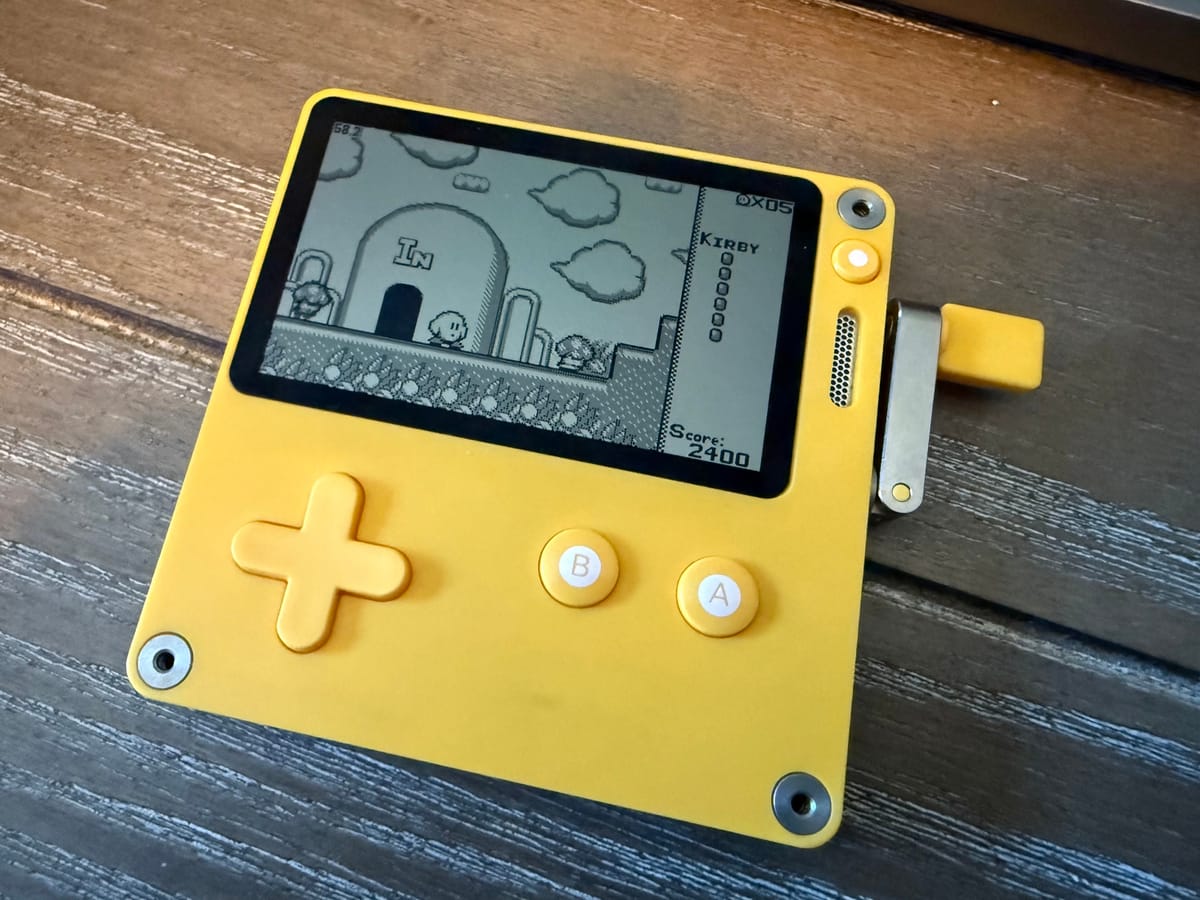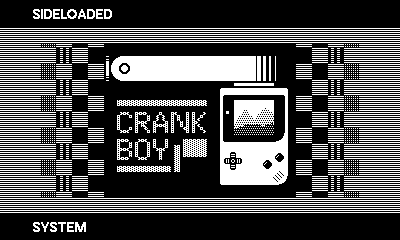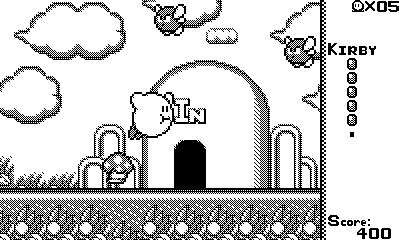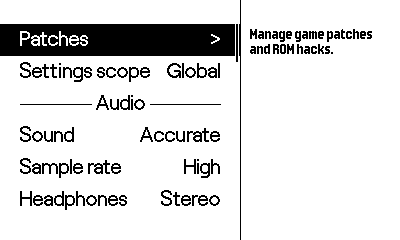CrankBoy: How Two Devs Made Game Boy Run on the Playdate

The Playdate isn’t your average console. It doesn’t scream for your attention with 4K visuals or rumbling triggers, and it’s certainly not in the race for graphics; it fits neatly in the palm of your hand, bright yellow and unapologetically weird. With its black-and-white screen, D-pad, two buttons, and that now-iconic crank on the side, it feels like someone reinvented the Game Boy in an alternate timeline where fun and strangeness mattered more than specs. Part of the magic of the Playdate is its delivery system: instead of a giant store or back catalog, games arrive in ‘seasons,’ one new title each week for twelve weeks, creating this old-school excitement of waiting for the next surprise to pop up on your handheld.
That retro spirit didn’t just inspire indie developers to make quirky experiments, it also planted the seed for a project that might be the most ambitious Playdate app yet. Two developers, known as Sodium and Stonerl, decided that if everyone was going to compare Playdate to a Game Boy, it was about time someone made that comparison real. As Sodium put it, there are two things every device needs to prove itself: it should run Doom, and it should emulate retro games. For her, the Game Boy was the perfect match. People already called the Playdate a “Game Boy with a crank,” so why not let it actually be one?
Of course, emulation wasn’t just about nostalgia for her. She noticed that despite years of effort, nobody had managed to optimize a Game Boy emulator that ran full speed on the Playdate. That challenge became an opportunity to push not just performance, but also user experience. In her words, she wanted to bring in features that emulators in 2025 should have by default: things like smooth support for ROM hacks, custom scripting, and sensible default settings instead of forcing users to wrestle with confusing menus. What she really wanted, though, was to set a new bar for emulator design. As she put it, the biggest problem holding emulation back these days isn’t hardware...it’s poor UX.
For Stonerl, the Playdate just radiated Game Boy ‘vibes’ from the start. The very first time he saw the device, he thought to himself that it looked like a modern interpretation of Nintendo’s classic handheld. When he finally got his Playdate earlier this year, he went hunting for emulators but was disappointed by the lack of performance. In his own words, he naively figured, “This can for sure be done better…” That curiosity, combined with Sodium’s technical expertise, became the beginning of something far more powerful than either expected.

From Curiosity to Collaboration:
Every emulator starts with a spark, and for Sodium, that spark was lit years before CrankBoy ever existed. She wasn’t just a fan of retro games; she was fascinated by how these old systems actually worked under the hood. The Game Boy, in particular, grabbed her attention. It wasn’t just nostalgia driving her, but the way its simple architecture made it a kind of ‘gateway drug’ into understanding CPUs, memory, and graphics. “The 8-bitNintendo consoles were my introduction to low-level programming and hardware,” she explained, and that foundation made the Playdate challenge irresistible.
Stonerl came from a slightly different angle. While he also shared a love for the Game Boy, his motivation leaned more toward making the Playdate feel like it was fulfilling its hidden destiny. To him, the little yellow crank machine was practically begging to host Game Boy games. He admitted that when he first tried to run existing emulators, the sluggish results just didn’t feel right. That frustration turned into motivation: “I just thought, yeah, let’s see if we can improve things here.”
It didn’t take long before the two developers found each other and realized their goals lined up. Sodium had the low-level knowledge and an obsession with performance tuning. Stonerl had the instinct to polish things, test thoroughly, and ensure the end result felt like a seamless experience. Together, they became a perfect fit - one pushing the technical side, the other shaping how it felt to players. They weren’t just coding for the sake of it; they were on a mission to make the Playdate the best little Game Boy it could possibly be.
But make no mistake, this wasn’t some casual side project they hacked together over a weekend. It quickly grew into something that consumed them. As Stonerl admitted with a laugh, it became “a bit of an obsession project.” Once they started pulling off early wins, like getting games to boot faster, run smoother, and even experiment with crank controls, they couldn’t stop themselves from going deeper. Every solved problem opened up a new rabbit hole, and every new idea pushed CrankBoy closer to (hopefully) being the definitive emulator for Panic’s pocket console.

Making the Impossible Run Smooth:
Emulation is never as simple as just ‘making old games run on new hardware.’ It’s an effort between accuracy and speed, where shaving off a single millisecond can mean the difference between a game feeling crisp or a game that feels sluggish. On a modern PC, you can get away with brute force. Throw a powerful CPU at the problem, and even sloppy code can chug along just fine. The Playdate, however, doesn’t have that luxury. Its tiny processor and modest RAM mean every single instruction matters, and optimization isn’t just important, it’s almost like a kind of survival.
That’s exactly what pulled Sodium in. For her, it was about seeing whether the impossible could actually be achieved: full-speed Game Boy emulation on a device that, at first glance, shouldn’t even be capable of it. She noticed that earlier emulator attempts on the Playdate always seemed to hit a wall. Either they sacrificed speed and games felt unplayable, or they cut corners on accuracy and things didn’t quite feel authentic. The challenge wasn’t just about squeezing performance, it was about making sure the games felt right. “I wanted to push not only performance,” she explained, “but also user experience and feature sets that emulators in 2025 should have.”
One of the biggest culprits slowing things down was the Game Boy’s quirky hardware behavior. Unlike modern systems that keep things relatively standardized, the Game Boy leaned on clever tricks to stretch its limited capabilities. That meant emulating it accurately required carefully mimicking timing quirks, CPU cycles, and even display refreshes. Getting all of that to work on the Playdate’s modest hardware was like juggling on a tightrope: drop accuracy and fans would notice, but push too hard on accuracy and the system would grind to a halt.
For Stonerl, this technical challenge was part of the fun. The more he tested games, the more he noticed where things started to chug or break. It became a loop: test a game, find a hitch, refine the emulator, then test again. Slowly, things that once seemed impossible (smooth scrolling, responsive inputs, crisp audio) started to fall into place. Each small win fueled the obsession further.
The breakthrough came not from one single fix, but from countless small optimizations stacked together. Whether it was clever assembly tweaks, caching strategies, or balancing cycles just right, CrankBoy slowly transformed from a proof-of-concept into a genuinely impressive feat of engineering. What had once been “nice if it worked” now started to feel like a natural extension of the Playdate itself.
Twisting the Classic: The Crank Factor:
One of the defining features of the Playdate is, of course, the crank. That little silver handle sticks out almost like a cheeky nod to old-school pinball machines, but it also presented Sodium and Stonerl with a whole new set of questions: how do you adapt decades-old Game Boy games to a control that didn’t exist when they were made?
For Sodium, the crank was a “special challenge.” She experimented with how it could be integrated into the menus, making it possible to move your cursor or pop out the crank to open the menu in Pokémon Red, Blue, and Yellow. The goal was to make the experience feel natural, almost as if the original Game Boy designers had intended it. She noted that even though she isn’t a personal fan of Pokémon, she figured it would be the most popular game for emulation and wanted it to feel like a native Playdate title. Some of the crank implementations still need refinement, she admitted, but the foundation is there; allowing players to enjoy the classic games in a way that feels distinctly Playdate.
She even took the idea further with more experimental applications. Kirby’s flying mechanics, for example, were tweaked to be crank-controlled. Cranking at different speeds adjusts Kirby’s thrust, creating a surprisingly nuanced interaction. While it doesn’t feel perfect yet, it’s an example of how the crank can turn familiar gameplay into something fresh and unexpected. And, of course, if players prefer, the original button-based controls still work just fine.
Stonerl and Sodium also had to navigate visual compromises. The Playdate’s 400×240 black-and-white dithered display doesn’t match the original Game Boy screen perfectly, so they experimented with aspect ratios and HUD placement to get the visuals as close to ideal as possible. Sodium explained that the dithered look actually enhances the original grayscale aesthetic, giving players a new way to appreciate Game Boy graphics. Some games with tiny text or pre-existing dithering patterns can be tricky, but in many cases, the result is striking. They also found creative ways to work around the Playdate’s 60 FPS limitation, like displaying every other frame or selectively refreshing scanlines to maintain smooth motion in games like Tetris or Pinball.
The crank, combined with these display tweaks, turns the Playdate into more than a handheld emulator, it becomes a platform for playful experimentation. Sodium even dreamed up crank-based hacks for classic games, like switching weapons in Mega Man or toggling missiles in Metroid II using the crank’s docking mechanism. These ideas hint at the ways CrankBoy could evolve beyond simple emulation, blending retro gaming with entirely new interactions that only the Playdate could offer.

Sound, Mods, and the Devil in the Details:
Emulation isn’t just about visuals and controls; it’s also about sound. For CrankBoy, audio presented one of the trickiest challenges, and Stonerl explained that they never had a fixed target for sample rates. Instead, the priority was minimizing compute time while still aiming for clean sound: “What we knew was that sound had a big performance impact, depending on the channels used, up to 10fps. So the goal… was to get audio computing time down as much as possible and if we could achieve ‘perfect’ sound along the way that would be the cherry on top.”
They experimented with different sample rates, used look-up tables to reduce computation for noise channels, and even created a Fast Audio mode that approximates waveforms to save processing power. In the final stretch, they realized that generating a mono source and down-mixing the Game Boy’s channels themselves could give another 2fps improvement depending on the game. It was a painstaking process, but it meant players could enjoy relatively (or decently) accurate audio without sacrificing speed, something that had eluded previous Playdate emulators.
Beyond performance, CrankBoy shines in customization, particularly when it comes to ROM hacks. Sodium explained that patch file support came from her personal workflow: “I like ROM hacks a lot. It’s convenient to not have numerous copies of a game cluttering up the library when it could just be one copy (plus a hack selection screen).” ROM hacks, essentially fan-made mods, let players translate games, update control schemes, or add new levels. CrankBoy’s support for these small but powerful tweaks makes it a true playground for retro game enthusiasts.
Sodium also highlighted one of the emulator’s nerdiest touches: the ability to apply specific configurations for individual games. Certain titles might look better with unique dither patterns, display tweaks, or alternative control schemes. Most players won’t even touch these settings, but for those who enjoy tinkering, they provide a subtle layer of polish.
Stonerl added another behind-the-scenes gem: the cover art system. Converting downloadable artwork into the Playdate-friendly black-and-white PDI format and caching it with LZ4 compression ensures smooth scrolling even with hundreds of titles.
These little touches aren’t flashy, but they make the app feel professional and thoughtful in ways that hardcore users appreciate.
CrankBoy even includes fun, playful elements like shuffling contributor credits and randomly generated music during credit viewing. These details, while minor, reflect the developers’ philosophy: emulation can be both technically rigorous and whimsical, blending practicality with creativity in a way that keeps the Playdate’s quirky personality front and center.

Walking the Line: Legality, Ethics, and Retro Respect:
Emulation has always carried a whiff of controversy, even when it’s perfectly legal. For CrankBoy, Sodium and Stonerl were careful to draw a clear line between emulating hardware and distributing ROMs. Sodium emphasized that Game Boy emulators themselves are legal: “Game Boy emulation is not a legal gray area. Game Boy emulators are completely legal, and Nintendo has even directly stated that emulators which do not bypass DRM are legal.” Modern systems, like the infamous Yuzu for the Switch for example, are trickier because they can bypass DRM, but classic handheld emulation remains firmly above board.
Stonerl sees it as a matter of clarity: emulation is just software replicating hardware functionality, similar to virtualization. He pointed out that many older games wouldn’t be playable at all without emulators. “I still have some games from back in the day, when I owned an Amiga 1200. Without emulation I would not be able to actually play these games anymore, since my Amiga died a long time ago.” For them, CrankBoy isn’t a vehicle for piracy, it’s a preservation tool, a way to give new and old players access to classics in a form that respects the original experience.
Even as they navigate the gray areas of legality, they’re aware of how companies handle retro content. Sodium noted that while the scene is better than it was twenty years ago, licensing issues still prevent some games from being easily purchased or re-released, especially sports titles, racing games, or rhythm games. Stonerl added that platforms like Nintendo Switch sometimes re-sell the same old titles or lock them behind subscriptions, leaving players dependent on emulation for accessibility. In their eyes, CrankBoy offers a fair and–above all–ethical way to play games that might otherwise be lost to time.
Looking ahead, the developers are thinking about ways to expand CrankBoy’s utility. Sodium mentioned community-requested features like opt-in support for Retro Achievements, which would bring online-style goals to classic games, and a repository of per-game default settings so players could instantly get the optimal dither pattern or frame rate. She’s also realistic about hardware limits. Game Boy Color support is “just at the edge of plausibility” due to the extra features and faster CPU, though most CGB games already run fine in monochrome on CrankBoy.
The vision doesn’t stop there. Sodium sees CrankBoy as a potential platform for other emulators on the Playdate, welcoming contributions from developers interested in porting additional systems. And if Panic ever releases a Playdate 2, she dreams of leveraging new features: color screens, better refresh rates, extra buttons, and who knows what zany surprises might appear. For she and Stonerl, CrankBoy is both a labor of love and a proving ground for what retro-inspired handhelds can do when creativity and technical skill collide.
Where to Start. Introducing a New Generation to Game Boy:
One of the most fun aspects of CrankBoy isn’t just the technology or the clever optimizations, it’s introducing new players to the magic of Game Boy games. Sodium shared her pick for a first experience: Kirby’s Dream Land.
It’s quick, approachable, and perfectly suited to the Playdate’s unique quirks. “Kirby’s Dream Land is a short, easy, and fun little title, and we have special support for it. It holds up very nicely.” It’s a game that teaches the basics while still being charming and nostalgic, bridging the gap between decades-old design and modern handheld play.
Beyond the classics, CrankBoy opens the door to aftermarket titles, indie Game Boy releases, and the growing community of ROM hackers creating new experiences for old hardware. With the Playdate’s crank and its tight-knit developer community, there’s real potential for fans to add their own tweaks, scripts, or even completely new games that take advantage of CrankBoy’s flexibility. Sodium envisions a world where the emulator isn’t just about reliving the past, it’s a springboard for experimentation and creativity.
Ultimately, CrankBoy represents the intersection of technical prowess, playful design, and retro reverence. Stonerl and Sodium didn’t just make a Game Boy emulator for the Playdate; they crafted a platform that celebrates what makes these old games great while giving them a fresh, quirky identity on a modern pocket console. From optimizing audio and visuals to integrating the crank and supporting ROM hacks, every detail reflects their obsession, their skill, and their love for both the hardware and the games themselves.
For anyone holding a Playdate today, CrankBoy isn’t just an app, it’s a reminder that even in 2025, there’s still plenty of magic in turning the crank and rediscovering the classics. Whether you’re a seasoned retro gamer, a curious newcomer, or someone who just loves clever little tech, CrankBoy offers an experience that’s as fun to explore as it is to play. And as Sodium and Stonerl continue to refine it, the little yellow console keeps proving that sometimes the simplest ideas, ‘Game Boy on a crank’, can be the most enchanting.
A huge thank you to Stonerl and Sodium for taking the time to chat with me and peel back the curtain on CrankBoy. Their insight, passion, and quirky sense of fun really shine through in every detail of the emulator. Whether you’re a veteran Game Boy fan or a newcomer discovering these classics for the first time on Playdate, it’s clear that CrankBoy is a labor of love, and we have these two talented developers to thank for making it all possible.
If you’d like to look further into the Playdate console itself:
- Here is their website https://play.date/
If you’d like to look further into CrankBoy:
- Here is their GitHub
- And their Patreon if you’re interested in supporting their work
- Here is a link to the playdate dev forum thread which Sodium made about optimization techniques: "these are some special / unusual techniques for writing really performant code on playdate, it's a very important read in case one of your readers feels like taking a crack at an emulator"
